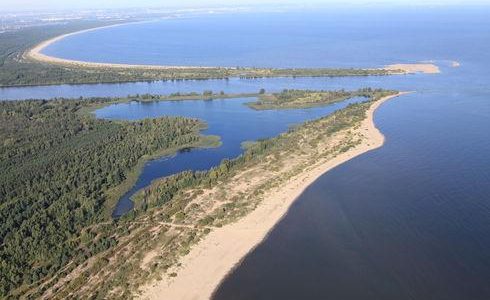The park has an area of nearly 20,000 ha. The postglacial lie of the land, cut by a dense network of valleys at the edges of the upland is one of the most valuable assets of the Park and is its unique, defining feature. The postglacial features of the landscape are reinforced by the presence of numerous glacial erratics, many of which are protected as natural monuments. Brooks flow at the bottom of its valleys, most of which have their source in the park, e.g. the Cedron, the Zagórska Struga, the Cisówka, the Kacza, the Swelinia, the Potok Oliwski and the Strzyża. The commonly-encountered hollows feature peat bogs and more than ten small lakes, e.g. Wyspowo, Borowo, Pałsznik, Wygoda, Bieszkowice, and Zawiat. Some of these have maintained the features of a primitive lake featuring organisms with a low demand for food and water, which formed right after the glacier passed.
About 90% of the area of the Tri-City Landscape Park is covered by forests, which, in connection with the distinctive lie of the land, gives the park its unique landscape. The most common are beech and mixed forests with beech. Some stretches of land feature wet-ground forests, carrs, marsh forests and birch groves. Valuable features of the environment also include non-forest habitats, such as semi-natural valley grasslands. These significantly contribute to enriching the park’s landscape and flora. The most naturally valuable aqua features include lobelia lakes (which have a flora characterised by a low demand for food and water peat bogs and seepage spring areas with interesting plant communities. The fascinating flora of the park features many protected plant species, including mountain and relic plant communities. Rare and curious species of mushroom and animals are also found here.
In the area of the Tri-City Landscape Park there are 10 nature reserves, 18 ecological sites and 167 natural monuments (including 34 in the buffer zone).
Its location in the direct neighbourhood of a large agglomeration makes the Tri-City Landscape Park an extremely valuable destination for tourism and leisure among the Tri-City residents. Besides its unquestionable natural assets, the park and its buffer zone also feature valuable elements of cultural heritage, such as early mediaeval fortified settlement and burial mound complex or Kalwaria Wejherowska, which goes back to the second half of the 17th Century. Sadly, in recent years, urbanisation pressure on the area of the Park and its buffer zone has significantly increased. This is posing a threat to the local flora and fauna and the landscape itself, as well as the proper development of the agglomeration.



















